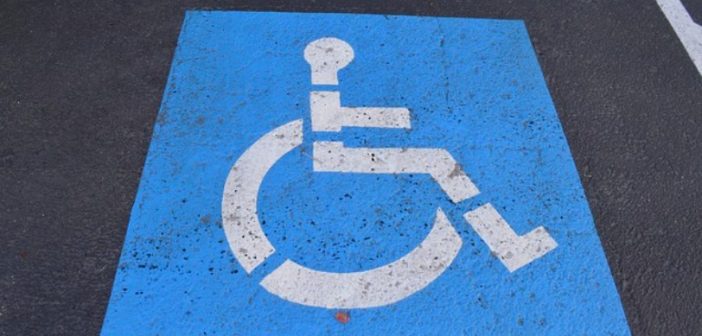The Americans with Disabilities Act (ADA) is a landmark legislation that ensures the civil rights of people with disabilities. It prohibits discrimination based on disability and mandates accessibility for individuals with disabilities. This groundbreaking law has a profound impact on various aspects of society, including the physical environment, employment, and digital spaces.
This comprehensive guide to ADA compliance will explore the critical aspects of the ADA, how it applies to different domains, and the essential steps for individuals and organizations to ensure compliance. Whether you are a business owner, website developer, or simply someone interested in understanding the ADA, this guide provides the knowledge needed to navigate the intricacies of ADA compliance.
Understanding the Americans with Disabilities Act (ADA)
To effectively comply with the ADA, it’s crucial to have a deep understanding of the law itself. Title I of the ADA prohibits employment discrimination based on disability. It necessitates employers with 15 or more employees to provide accommodations to individuals with disabilities. Employers must also make their job application process, hiring, and employment practices accessible to people with disabilities. Title II covers public entities, including state and local governments. It mandates that these entities provide equal access and services to disabled individuals. Title III applies to businesses and non-profit organizations considered places of public accommodation. This includes restaurants, hotels, retail stores, and entertainment venues. These entities must remove architectural and communication barriers that would prevent equal access for people with disabilities.
Title IV ensures that individuals with hearing and speech disabilities can access telecommunications services. It mandates the provision of relay services to facilitate telephone conversations between people with disabilities and those without.
This encompasses providing digital accessibility solutions to ensure effective communication for people who are deaf. Explore the internet, where you may find adacompliancepros.com. You will find more information on their website, giving insights into the various services and solutions available to ensure effective communication for individuals with hearing and speech disabilities. These services often include video relay services (VRS), which enable individuals who use sign language to communicate via video with an interpreter, facilitating the conversation with hearing individuals.
ADA Compliance in the Physical Environment
Ensuring physical accessibility is a fundamental aspect of ADA compliance. This applies to public spaces, government buildings, and businesses. All new construction and alterations must comply with ADA standards for accessible design. This includes accessible entrances, restrooms, parking spaces, and pathways. Public entities and businesses must modify their policies, practices, and procedures to accommodate disabled individuals. This may include providing additional time for tasks or offering assistance when needed.
Effective communication is essential. For individuals with vision or hearing impairments, this may involve providing information in accessible formats or offering sign language interpreters during crucial interactions. Under the ADA, individuals with disabilities have the right to be accompanied by service animals in places that are open to the public. This includes businesses and public transportation.
ADA Compliance in the Digital Space
In today’s digital age, it’s crucial to extend ADA compliance to the online world. Here’s how you can ensure your website and digital content are accessible:
- Web Content Accessibility Guidelines (WCAG): WCAG is a set of international guidelines for making web content accessible to disabled individuals. These guidelines address various accessibility issues, including text alternatives for images, keyboard navigation, and accessible colors and fonts.
- Accessible Design: When designing or updating your website, consider accessibility from the outset. Ensure the layout is responsive, images have appropriate alt text, and navigation is user-friendly for people with disabilities.
- Testing and Evaluation: Regularly test your website for accessibility using automated tools and manual testing. This will help identify and address any barriers to accessibility.
- Content Accessibility: Ensure all content, including documents and multimedia, is accessible. Use captioning and transcripts for videos, and provide accessible versions of documents like PDFs.
Legal Remedies and Penalties for Non-Compliance
It’s important to understand that non-compliance with the ADA can result in legal consequences. Some of the legal remedies and penalties for non-compliance include:
- Civil Lawsuits: Individuals with disabilities who believe their rights under the ADA have been violated can file civil lawsuits seeking monetary damages and injunctive relief.
- Department of Justice (DOJ) Investigations: The DOJ can initiate investigations into ADA compliance and bring enforcement actions against non-compliant entities. This can result in significant penalties and fines.
- Private Settlements: Some cases are resolved through personal settlements, where the parties agree to take corrective actions and compensate individuals with disabilities.
- Public Relations Impact: Non-compliance can also have a significant negative impact on an entity’s reputation, affecting public perception and customer trust.

The Americans with Disabilities Act is a cornerstone of civil rights legislation that ensures equal access and opportunities for individuals with disabilities. Whether in the physical environment, digital space, workplace, or public services, adhering to ADA standards creates a more inclusive and equitable society. By understanding the critical components of the ADA and taking proactive steps to comply, businesses and organizations can not only avoid legal consequences but also contribute to a more accessible and inclusive world. The future of ADA compliance will continue to evolve, making it essential for all of us to stay informed and committed to this vital cause.





2 Comments
Transparent pricing with clear communication about costs. Fausto Atilano
This post is a very detailed review of an important topic. I feel like I have improved my knowledge after reading it. fnf